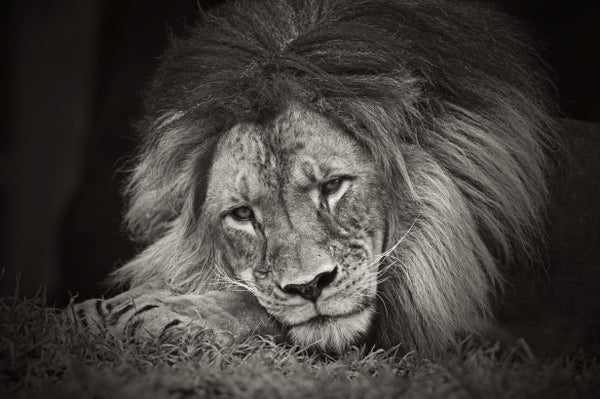Over coffee a couple of years ago, Javaan Chahl, a remote sensing engineer at the University of South Australia, was geeking out about vital signs. Specifically, he and a few of his colleagues were discussing how they might use cameras to take precise readings of people’s breathing and heart rates. The engineers were confident they could make such a tool, but they were not so sure about its applications. After all, someone joked, people don’t bite when a medical professional applies a stethoscope to them.
But this comment got Chahl thinking: many animals do bite, which is why researchers and veterinarians often trap or tranquilize them before recording their vital signs. When he reached out to zookeepers, Chahl says, they confirmed that basic health checks on an animal—conducted by capturing and restraining it or shooting it with a tranquilizer dart gun—can cause stress or even injury, which “is actually quite a big deal.” The keepers also told him they would very much welcome a technology that could read vital signs remotely and noninvasively.
Inspired by those conversations, Chahl and his colleagues built a prototype device comprising a high-resolution digital video camera, a telephoto lens and a signal-processing program they wrote in the computing software MATLAB. The program analyzes incoming images to determine an animal’s breathing and heart rates, based on tiny motions, such as expansion in the chest and smaller rhythmic movements of the entire body.
On supporting science journalism
If you're enjoying this article, consider supporting our award-winning journalism by subscribing. By purchasing a subscription you are helping to ensure the future of impactful stories about the discoveries and ideas shaping our world today.
As reported in December in the journal Sensors, at the Adelaide Zoo in Australia, the researchers successfully tested the method on 10 species, including lions, pandas, Sumatran tigers, orangutans and little blue penguins (plus, Chahl adds, a number of human volunteers). “We’ve done quite a range of animals,” he says. “I thought the orangutan might be problematic just because they’re so hairy, yet we got a signal from it.” He believes the method could be used on almost any species, including very small ones. “The nice thing about light-based imagery, as opposed to radar or thermal cameras, is that you can go from looking at the moon to looking at bacteria just by changing lenses,” he says. Exceptions, he notes, might include turtles, because their shell hides their chest cavity.
Another positive aspect of light-based imagery is its high resolution, which allowed Chahl and his colleagues to monitor animals from 10 to 130 feet away. The computer program they wrote can filter out most “noise” from an animal’s natural movements, although it does not work if a subject is running. It functions best in bright, direct light, angled from above or the side. “Imagine a really bad selfie that brings out all your flaws,” Chahl says. “That is when the technique works best.”
Christopher Lavers, a lecturer in radar and telecommunications at the University of Plymouth in England, who was not involved in the study, agrees the new method could enhance the safety of both animals and people. He recalls some close calls when he checked animals’ vitals using other techniques. For example, when Lavers tried to employ a thermal camera—which has poor resolution and requires getting close to a subject—to monitor a tiger through the bars of its cage, a zoo employee had to keep a careful watch to ensure the animal did not run over and claw him. On another occasion, he had to get in a water buffalo pen to use his equipment and was so absorbed in his thermal camera work that it took him a while to register that shouts of “Get out now!” were directed at him.
Having a way to take accurate, noninvasive health measurements of wildlife from a safe distance, Lavers says, “opens a whole new door to doing things that you couldn’t do previously.”
Chahl next plans to go beyond the zoo and test his method on populations of wild animals to see whether it could work as a potential conservation tool. He can also imagine human applications for the technology. In airports, for instance, it could be used for mass health screenings of passengers’ breathing and heart rates during an illness outbreak. And in neonatal wards, he imagines it could potentially be a substitute for electrodes, which are typically taped to newborn’s delicate skin and can easily cause minor injuries. People may also wish to install such devices as passive health and fitness monitors in homes, retirement facilities or gyms.
“Cameras that are able to do this have been around for a long time, but nobody’s bothered to try this before,” Chahl says. “There are probably many subtle movements and changes that indicate underlying processes that could be detected—if only we look carefully enough, closely enough or long enough.”
